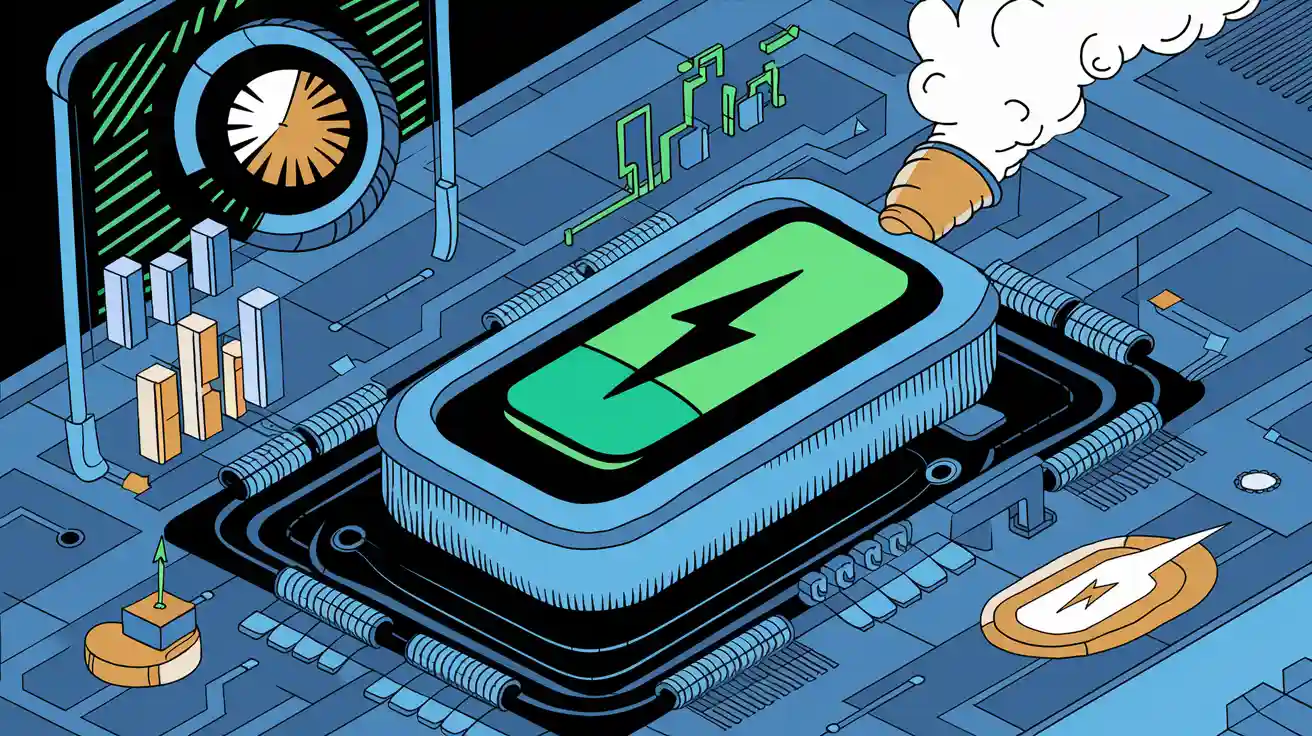
Battery charging protocols have become essential for modern technology, especially in 2025. These mainstream battery charging protocols, such as USB Power Delivery (PD 3.1 and PD 3.0), Programmable Power Supply (PPS), Quick Charge (QC), and proprietary standards like VOOC and SCP, enable seamless compatibility across devices. Over 80% of smartphones and laptops now support USB-PD, reflecting its dominance. With the electric vehicle charging infrastructure projected to surpass $104 billion by 2035, understanding these protocols ensures optimal performance for lithium battery packs and EVs.
Key Takeaways
Charging methods like USB Power Delivery and Quick Charge help devices work together and charge faster, making tech better.
Learning about these methods helps companies save energy and make lithium-ion batteries last longer in gadgets and electric cars.
Using common standards like USB-C can cut down on e-waste and keep devices working with new chargers in the future.
Part 1: What Are Battery Charging Protocols?
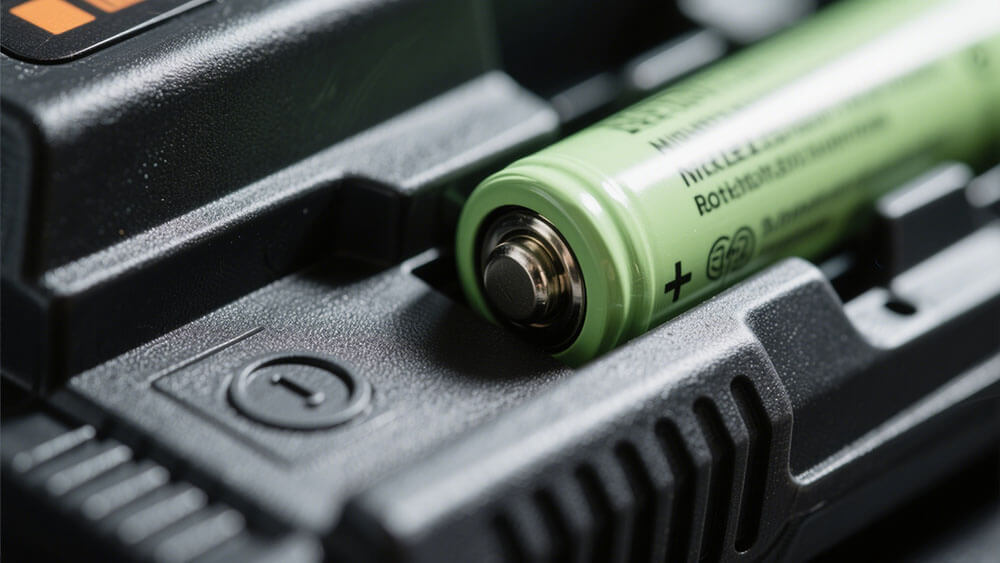
1.1 Definition and Purpose
Battery charging protocols are standardized systems that regulate how devices receive power during the charging process. These protocols ensure safe, efficient, and reliable energy transfer by managing voltage, current, and temperature. They also enable interoperability between chargers and devices, making them essential for modern electronics. For example, USB Power Delivery, a universal standard, supports multiple charging profiles, optimizing the process for various devices.
Charging protocols have evolved to meet the growing demand for fast charging and compatibility across devices. They now play a critical role in industries like consumer electronics and EVs, where efficient energy management is vital.
1.2 Importance for Lithium Battery Packs
Lithium battery packs rely on advanced charging protocols to maximize performance and longevity. Fast charging protocols, such as Quick Charge and Programmable Power Supply, reduce charging time significantly. For instance, some devices can reach 50% charge in just 30 minutes. These protocols also monitor battery temperature and adjust power delivery to prevent overheating or overcharging, ensuring safety and durability.
In EVs, charging protocols like the Combined Charging System Standard and the North American Charging Standard enable seamless integration with charging infrastructure. This ensures compatibility and supports the scaling of high-power charging stations, which are crucial for commercial fleets and urban grids.
1.3 Role in Modern Technology and Mobile Power Supply
Charging protocols have transformed how you interact with technology. They enable fast charging for smartphones, tablets, and laptops, reducing downtime and enhancing productivity. For example, USB Power Delivery supports up to 240W, making it suitable for larger devices.
In addition, protocols like PPS dynamically adjust voltage and current in real-time, improving efficiency and extending battery life. These advancements also support energy management systems, such as vehicle-to-grid (V2G) technologies, which enhance urban grid resilience. As a result, charging protocols are integral to the development of sustainable and efficient power solutions.
Note: Strategic placement of charging infrastructure and tailored energy management approaches are essential to meet the growing demand for high-power charging in urban areas.
Part 2: Key Mainstream Battery Charging Protocols of 2025
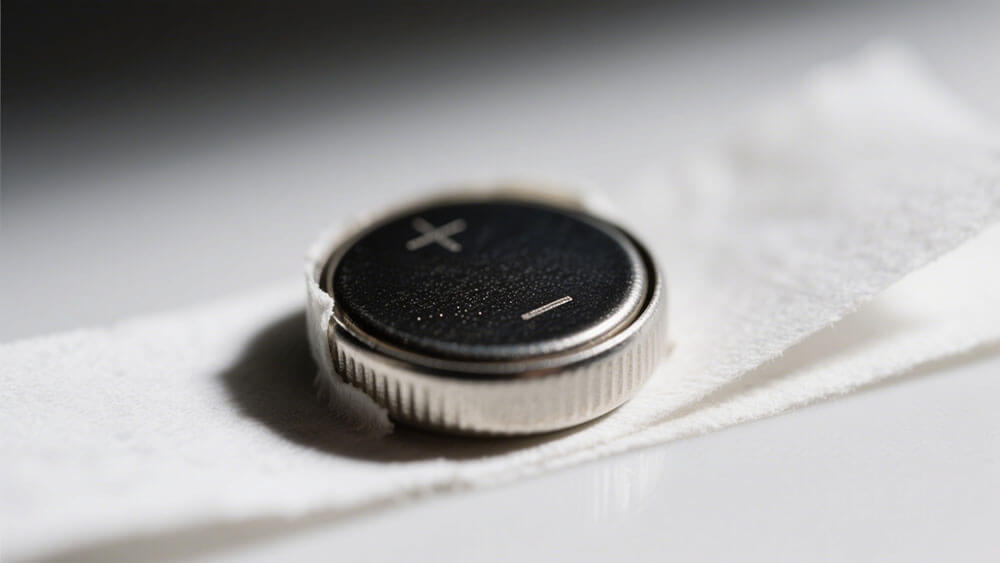
2.1 USB Power Delivery (PD 3.1 and PD 3.0)
USB Power Delivery (PD) has emerged as one of the most versatile and widely adopted charging protocols. PD 3.1, the latest iteration, supports power delivery up to 240W, making it suitable for high-demand devices like laptops, tablets, and even industrial equipment. This protocol dynamically adjusts voltage levels (5V, 9V, 12V, 15V, and 20V), ensuring efficient energy transfer and compatibility across devices.
PD 3.0, while slightly older, remains a cornerstone for fast charging. It supports up to 100W and integrates seamlessly with USB-C connectors, which are now standard in consumer electronics. The interoperability of USB Power Delivery makes it ideal for lithium-ion battery packs, enabling safe and efficient charging for devices ranging from smartphones to EVs.
Tip: If your business relies on devices with varying power requirements, USB Power Delivery ensures compatibility and reduces downtime.
2.2 Programmable Power Supply (PPS)
Programmable Power Supply (PPS) is an advanced extension of USB Power Delivery. It fine-tunes voltage and current in real-time, optimizing the charging process for devices with lithium-ion batteries. PPS is particularly beneficial for fast charging protocols, as it minimizes heat generation and maximizes efficiency.
Samsung and Google have integrated PPS into their flagship devices, showcasing its ability to deliver tailored charging solutions. For EVs, PPS plays a critical role in managing high-power charging infrastructure, ensuring safety and performance. Businesses leveraging PPS-compatible devices can benefit from reduced energy waste and extended battery life.
2.3 Quick Charge (QC) and Its Evolution
Quick Charge (QC), developed by Qualcomm, revolutionized fast charging protocols. Its evolution from QC 2.0 to QC 4+ has brought significant improvements in speed and efficiency. QC 5.0, the latest version, supports up to 100W and offers universal compatibility with USB Power Delivery.
The table below highlights the quantified advantages of Quick Charge versions:
Quick Charge Version | Charging Speed | Notes |
|---|---|---|
Quick Charge 2.0 | Up to 75% faster than 5W chargers | Introduced in 2014 to support higher charge levels |
Quick Charge 3.0 | Up to 80% in 35 minutes | Introduced in 2015, focuses on efficiency |
Quick Charge 4/4+ | Up to 4 times faster than 5W chargers | Universal compatibility with fast charging devices |
QC’s ability to dynamically adjust voltage and current ensures safe and efficient charging for lithium-ion battery packs. Its widespread adoption in smartphones, tablets, and EVs underscores its importance in modern technology.
2.4 Other Notable Protocols: Qi Wireless Charging, Samsung AFC, and Mi Turbo Charge
Several proprietary protocols complement mainstream standards, offering unique advantages for specific applications. Qi Wireless Charging, for instance, uses electromagnetic induction to deliver power wirelessly. While its efficiency varies, it supports up to 15W, making it suitable for consumer electronics like smartphones and wearables.
Samsung AFC (Adaptive Fast Charging) and Mi Turbo Charge enhance fast charging capabilities for their respective devices. Samsung AFC, based on QC 2.0, supports up to 15W, while Mi Turbo Charge delivers up to 120W with proprietary accessories.
These protocols demonstrate the diversity of charging solutions available in 2025. Businesses can leverage these technologies to optimize charging infrastructure and improve device compatibility.
Note: For industries like consumer electronics, industrial applications, and EVs, selecting the right charging protocol ensures efficiency and scalability.
Part 3: Compatibility and Applications
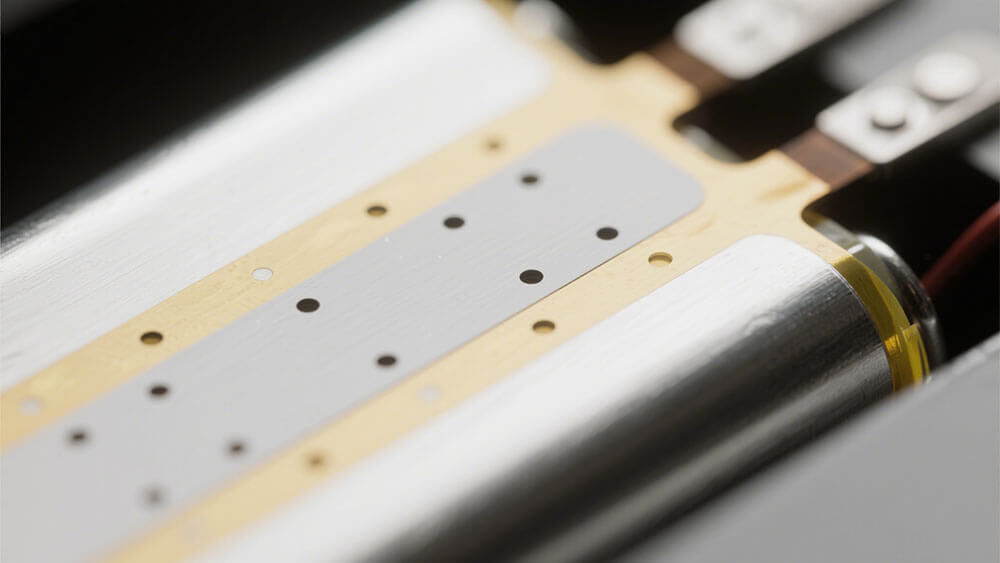
3.1 Device Compatibility and USB-C Integration
Modern charging protocols have revolutionized device compatibility, with USB-C emerging as the universal standard. USB-C connectors simplify the charging process by supporting multiple protocols, including USB Power Delivery and Quick Charge. This integration ensures seamless interoperability across smartphones, laptops, tablets, and even EVs.
The widespread adoption of USB-C reflects its versatility and efficiency. For instance:
The global USB-C laptop market is projected to reach $58 billion by 2026, highlighting its compatibility with current charging protocols (IDC, 2022).
USB-C smartphones experienced an 88% year-over-year growth in 2021, showcasing rapid consumer adoption (Strategy Analytics).
Around 121 million unused phone chargers in the US emphasize the environmental benefits of universal standards like USB-C (Statista).
USB-C integration also addresses e-waste concerns. By harmonizing charging standards, manufacturers reduce redundant accessories and promote sustainability. This aligns with global initiatives like the European Commission’s policy on universal chargers and the United Nations Environment Programme’s recommendations for reducing e-waste.
For lithium-ion battery packs, USB-C compatibility enhances charging efficiency and safety. Devices equipped with USB-C connectors benefit from dynamic voltage adjustments, ensuring optimal power delivery without overheating. This makes USB-C ideal for applications ranging from consumer electronics to industrial equipment.
Tip: Businesses can future-proof their products by adopting USB-C integration, ensuring compatibility with evolving charging protocols and reducing environmental impact.
3.2 Applications in Consumer Electronics
Battery charging protocols play a pivotal role in consumer electronics, enabling fast charging and efficient energy management. Smartphones, tablets, and laptops rely on advanced protocols like USB Power Delivery and Quick Charge to minimize downtime and maximize productivity.
For example, USB Power Delivery supports up to 240W, making it suitable for high-performance laptops and gaming devices. Quick Charge, with its ability to deliver up to 100W, ensures rapid charging for flagship smartphones. These fast charging technologies enhance user convenience and reduce reliance on traditional charging methods.
Wireless charging protocols, such as Qi, further expand applications in consumer electronics. Qi wireless charging uses electromagnetic induction to deliver power without cables, supporting devices like smartwatches and earbuds. While its power output typically ranges from 5W to 15W, proprietary enhancements by manufacturers like Xiaomi have pushed this limit to 50W.
The integration of charging protocols into consumer electronics also supports sustainability. By adopting universal standards, manufacturers reduce the need for proprietary accessories, lowering production costs and minimizing e-waste. This aligns with global efforts to promote interoperability and environmental responsibility.
Note: Explore how Large Power’s custom battery solutions can optimize charging protocols for your consumer electronics.
Applications extend beyond consumer electronics to industrial and medical devices. Lithium-ion batteries, with their high energy density and long cycle life, power critical systems like robotics, security systems, and infrastructure. These applications benefit from advanced charging protocols that ensure reliability and efficiency.
Callout: For insights into lithium-ion battery applications in consumer electronics, visit Large Power’s dedicated page.
Part 4: Future Trends in Charging Protocols
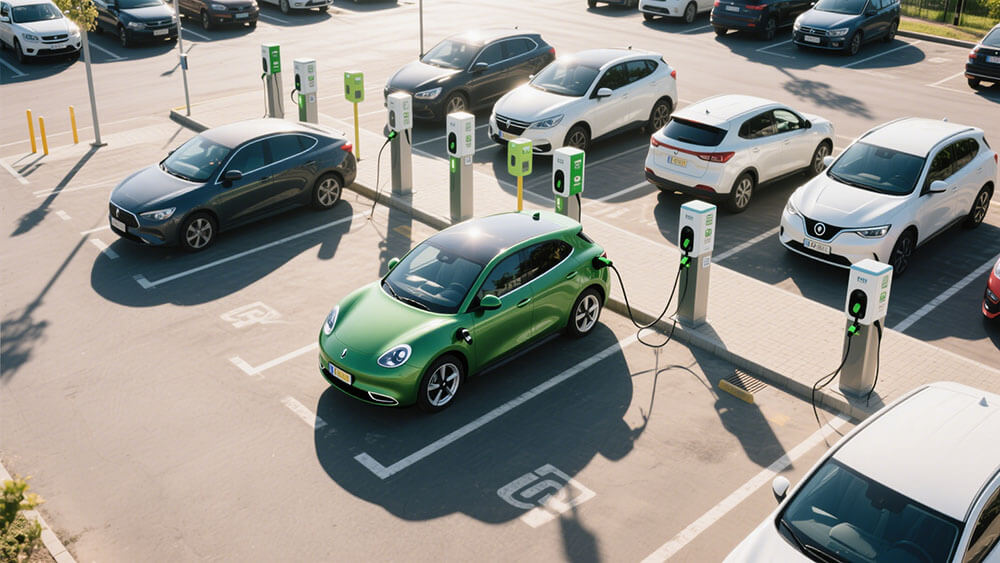
4.1 Bi-Directional Charging and Energy Management
Bi-directional charging is reshaping how you interact with energy systems. By 2025, Vehicle-to-Grid (V2G) technology will become mainstream, enabling electric vehicles (EVs) to return electricity to the grid. This innovation stabilizes grids during peak demand and complements renewable energy sources, which often fluctuate. Home storage systems will also play a pivotal role, storing energy during low-demand periods and supplying it back during peak times.
For lithium-ion battery packs, bi-directional charging enhances energy management. It allows EVs to act as mobile power stations, supporting urban infrastructure and emergency systems. Businesses can leverage this capability to reduce energy costs and improve operational resilience.
4.2 Advancements in Fast-Charging Technologies
Fast-charging technologies are advancing rapidly, transforming the charging process for EVs and consumer electronics. Ultra-fast chargers now deliver 80% charges in just 15 minutes, rivaling traditional refueling times. Innovations in battery cooling ensure safe and consistent high-speed charging, while smart AI networks reduce charging times and manage grid loads effectively.
Wireless charging systems are also gaining traction. Companies like Tesla and BMW are investing in technologies that enable frequent short charging sessions, tripling battery life. Michigan has demonstrated 35kW wireless charging for moving vehicles, showcasing the potential for dynamic charging infrastructure.
For lithium-ion batteries, these advancements improve efficiency and reduce downtime. Businesses adopting ultra-fast charging standards can enhance productivity and meet growing energy demands.
Callout: Learn how Large Power’s lithium-ion battery solutions support fast-charging technologies.
Battery charging protocols in 2025 have redefined how you approach energy management and device compatibility. Their role in optimizing lithium-ion battery performance ensures faster charging, extended lifespan, and enhanced safety across industries like consumer electronics, medical devices, and infrastructure.
Key Impacts:
USB Power Delivery and PPS enable seamless integration across devices, reducing downtime.
Proprietary protocols like VOOC and SCP deliver tailored solutions for high-demand applications.
Staying informed about advancements in charging protocols positions your business for future success. Explore how Large Power’s custom battery solutions can help you meet evolving energy demands.
FAQ
1. What is the most universal charging protocol in 2025?
USB Power Delivery (PD) is the most universal protocol. It supports multiple devices, offers up to 240W power, and ensures compatibility across smartphones, laptops, and EVs.
2. How does PPS differ from other protocols?
PPS dynamically adjusts voltage and current in real-time. This reduces heat, improves efficiency, and extends battery life, making it ideal for fast-charging applications.
3. Can proprietary protocols work with universal standards?
Yes, many proprietary protocols like Quick Charge 4+ and Mi Turbo Charge integrate with USB Power Delivery, ensuring compatibility while offering enhanced performance for specific devices.
Tip: Always check your device’s compatibility with a protocol before purchasing chargers or accessories.




